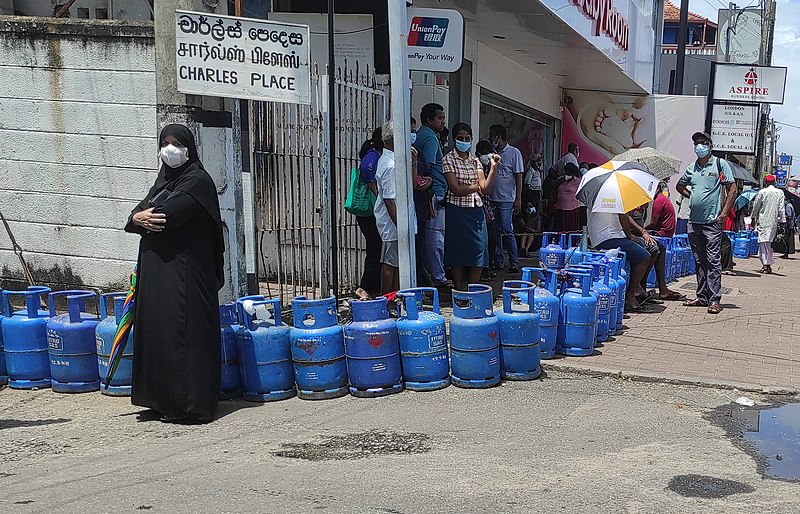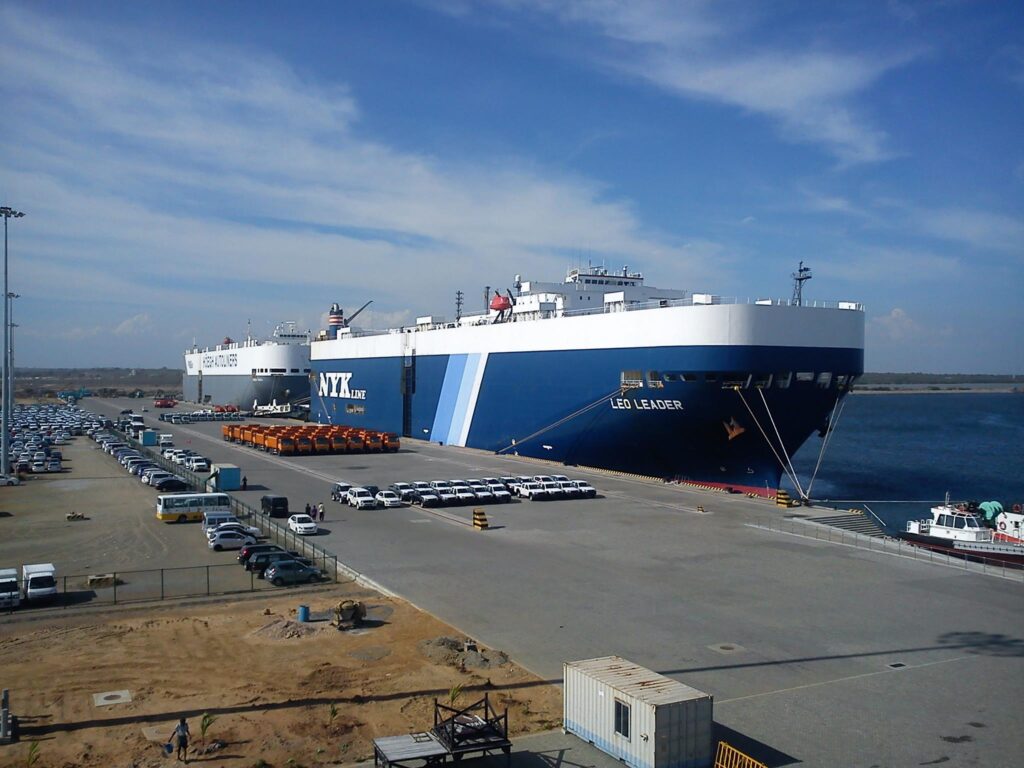
China’s role in Sri Lanka has undoubtedly changed over the past few years but is no less influential. Sri Lanka’s current foreign policy is almost exclusively driven by economic needs owing to its recent political and economic crises during which the country saw mass public protests following a rapid depreciation of its currency, shortages of essentials, and nearly thirteen-hour power cuts. The government was also forced to default on its foreign debt repayments.
From 2015-2019, Prime Minister Ranil Wickremesinghe’s foreign policy could best be described as a form of “strategic promiscuity” characterized by attempts to attract development finance and investment from India and China without isolating either of the regional powers. However, Wickremesinghe’s stance has changed since returning to power last year, following former President Gotabaya Rajapaksa’s resignation. The political and economic realities of the country are significantly different from those in 2019. In his current stint as head of state, Wickremesinghe’s foreign policy can be described as “enforced agnosticism,” an approach devoid of any firm strategic preference for one particular foreign policy stance over another. It is rather dictated by immediate needs – particularly the need to bring China, India, the Paris Club, and others to agree on restructuring its foreign debt.
The Bailout That Never Came
When Gotabaya Rajapaksa won in the November 2019 Presidential elections, many expected a return to the foreign policy approach followed by his brother Mahinda Rajapaksa, who favored a heavy tilt towards China during his time as President from 2005 to 2015. Instead, Gotabaya Rajapaksa declared at the outset of his Presidency that Colombo would follow a “neutral foreign policy.” In practice, the Gotabaya Rajapaksa government took its relationship with China for granted and various miscalculations and diplomatic gaffes throughout his tenure sullied it significantly. As ties deteriorated, Colombo’s largest miscalculation was its assessment of China’s appetite to bail out Sri Lanka from its debt crisis.
Wickremesinghe’s foreign policy can be described as “enforced agnosticism,” an approach devoid of any firm strategic preference for one particular foreign policy stance over another.
Contrary to some commentators, Sri Lanka’s economic crisis was not caused by Chinese debts. Instead, a series of ill-advised economic policy decisions put the country on course towards a self-inflicted economic crisis. For example, in November, 2019 the government introduced a series of tax cuts that gutted government revenue by approximately 33 percent, printed money at high levels to finance its deficits, and belligerently attempted to artificially control the exchange rate by emptying its foreign reserves, leading to a fiscal and foreign exchange crisis. The pace of the economic crisis was accelerated by COVID-19 and subsequent shocks that disrupted global and local markets. Yet, the Rajapaksa government remained bullish about its prospects and refrained from approaching the IMF for support, reportedly due to the expectation of a Chinese bailout. Such a bailout, however, was not forthcoming and China’s support was limited to a series of currency swaps. Moreover, as the economic crisis exacerbated, it is likely that China didn’t want to be seen as overtly supporting an increasingly unpopular government.
A Series of Diplomatic Gaffes
The Rajapaksa government made several other decisions that sullied its relationship with China. For instance, Sri Lanka awarded a Chinese firm the contract to develop hybrid energy plants on islands off the Northern coast, a few miles away from India. The project was suspended a month later following heavy pressure from India citing security concerns. The official public response from China was somewhat muted and announced the suspension of the project referring to “security concerns by a third party.” However, privately and unofficially, the response is reported to be much stronger.
A diplomatic spat between Sri Lanka and China also took place in September 2021 after a Chinese shipment of organic fertilizer was rejected by Sri Lankan officials over quality concerns which angered the Chinese. This led to Chinese embassy officials temporarily blacklisting a state-owned bank for not paying for the fertilizer shipment. A USD $6.9 million settlement was finally agreed on the eve of a two-day official visit by the then Chinese Foreign Minister Wang Yi in January 2022. Sri Lanka’s struggles to strike an elusive balance between China and India came into further focus in August 2022, when the government’s decision to permit, withdraw permission, and then regrant permission for a Chinese research ship to dock in the Hambantota Port drew the ire of both India and China.

India’s Opportunism
China’s reticence to support the Rajapaksa government during the economic crisis opened an opportunity for India to regain some influence over Sri Lanka that it had ceded to China since the late 2000s. Indian assistance of approximately USD $4 billion was crucial in ensuring at least some supply of basic essentials such as fuel, food, and pharmaceuticals at the height of the crisis last year when Sri Lanka ran out of adequate foreign currency reserves to pay for imports.
From the outset, India was keen to highlight that its support was directed to the people of Sri Lanka in the midst of a crisis, a not-so-subtle way of ensuring that they were not seen as propping up the unpopular government. Indian External Affairs Minister during a recent meeting with President Wickremesinghe characterized its support as a reassertion of India’s belief in being “a reliable neighbor, a trustworthy partner, and one who is prepared to go the extra mile when Sri Lanka feels the need.” India was also amongst the first bilateral creditors to support Sri Lanka’s debt restructuring efforts and helped lobby for a USD $2.9 billion IMF program to be approved.
India’s support for Sri Lanka over the past two years appears to be geared towards two specific goals. The short-term goal was to prevent a collapse of the Sri Lankan economy, which would have triggered a mass exodus of Sri Lankan refugees to India. Tamil Nadu currently hosts more than 66,000 Sri Lankan Tamil refugees who arrived across the border through the 1980s and 1990s during the war in Sri Lanka. A few hundred refugees had already arrived during the height of the economic crisis last year and worsening economic conditions would have led to further arrivals. The long-term ambition for India was to reclaim economic and political influence that it had ceded to China since the final stages of the war. India’s assistance during the economic crisis has led to a surge in public support amongst Sri Lankans, who have historically seen its neighbor at times as a bully.
Debt Restructure Negotiations and Future Investment Opportunities
Sri Lanka’s relationship with China, as would its relationship with many other countries, over the next year will be dominated by the island’s efforts to negotiate a debt restructure agreement. In March 2023, China agreed to support a “debt treatment” and thus cleared the path towards the IMF package being approved. The IMF package was conditional on Sri Lanka restructuring its debts and implementing a series of macroeconomic reforms to improve its debt sustainability levels. Since then, Sri Lankan authorities have been negotiating with bilateral, multilateral, and private creditors on a debt restructure. In April, Japan, together with India and France launched a common platform for all bilateral creditors to resolve Sri Lanka’s debt difficulties. At its first meeting held in May, China participated only as an observer. However, officials are optimistic that China’s participation even as an observer indicates an interest in future engagement in the process. Meanwhile, India has demanded “equal treatment” of all bilateral creditors, effectively ruling out the possibility for Sri Lanka to negotiate a separate debt deal with China. Overall, Sri Lanka will be keen to balance any foreign policy sensitivities, between India and China due to fears of a fallout affecting its debt negotiations.
Looking to the Future
Unlike the pre-crisis period, India and China are now unlikely to compete over large infrastructure projects in Sri Lanka. Rather, the most likely space for competition for investment between the two regional powers, as well as other nations such as the United States, would be in sectors that are undergoing significant reform and requiring private sector investment. The power, energy, telecom, and insurance sectors are amongst those most likely to be reformed and require private investment. Already, China’s Sinopec, Australia’s United Petroleum, and the USA’s RM Parks (in collaboration with Shell) have been given approval to enter the country’s fuel distribution market. Similar investment opportunities have also opened up in the renewable energy sector, especially in solar and wind energy. For example, Sri Lanka signed a renewable energy project worth USD $442 million with India’s Adani Group.
In effect, the almost exclusive concentration on immediate needs may lend itself to a Sri Lankan government finally achieving its elusive objective of maintaining a balance between India and China.
Over the past 15 years, especially since the final stages of the conflict, Sri Lanka has tried many different forms of balancing and rebalancing its relationship with India and China. However, it has failed to pursue a truly neutral stance and have often leaned towards one over the other. The country’s current economic predicament though leaves no room for error since a falling out with either could plunge the country back into a crisis and undermine the President’s aspirations of remaining in power after the next election. Although personally President Wickremesinghe may have an ideological preference of alignment, the country’s economic realities have forced him to be agnostic to those preferences. In effect, the almost exclusive concentration on immediate needs may lend itself to a Sri Lankan government finally achieving its elusive objective of maintaining a balance between India and China.
Whether Colombo can maintain such a balance once immediate concerns around debt are addressed remains unclear. Outside the debt negotiations, the regional powers have pushed Sri Lanka to manage its relationship as a “zero-sum” game. Sri Lanka is unlikely to change this perspective until it becomes a globally competitive export-oriented economy. This would be the only outcome that makes it less reliant on one or the other for economic support and provide it with greater bargaining power and the autonomy to have a truly balanced relationship with all partners.
*Views expressed in this article are the author’s own and should not be attributed to any organization with which he is affiliated.
Also Read: The Real Cause of Sri Lanka’s Debt Trap
***
Image 1: Sri Lankan Economic Crisis via Wikimedia Commons
Image 2: Hambantota Port via Wikimedia Commons


